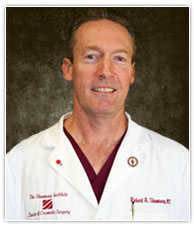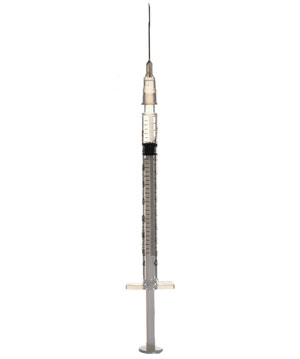And of course, there's the cost, which almost every medical spa meantioned in the story. (You'd have to get all of your Botox from Canada to afford that.)
Here's the story.
Single-use Botox vials used on more than one patient.
That practice at the Endoscopy Center of Southern Nevada, public health officials have repeatedly said, contributed to the hepatitis C outbreak in the Las Vegas Valley.
A phone call to inquire about the cost of a Botox party was greeted with this information: "It will be cheaper if all the partiers use the same vial."
One business that seems to be going well in Las Vegas is known for throwing Botox parties. That's an ongoing phenomenon across the country where friends get together and drink champagne while their wrinkles are needled away.
"We just couldn't handle it financially," said one medical assistant who asked to remain anonymous. "We would have gone out of business."
Medical assistants at two different spas said their owners only stopped multipatient use of single-use vials of Botox "until things quieted down" after the hepatitis outbreak was announced.
The Review-Journal had little trouble finding medical providers who said they and their companies knowingly broke state and federal regulations.
"You can't have doctors worrying about breaking the law or guidelines or whatever," Niamtu said.
A new company called Dysport is manufacturing a similar product, and the competition could force Allergan to provide smaller dosage vials to physicians who want them, he said.
Now a federal lawsuit filed in California by Las Vegas physician Ivan Goldsmith argues that sales representatives for Allergan Inc., maker of the popular anti-wrinkle drug Botox, promote multipatient use of its 50-unit or 100-unit single-use vials.
Goldsmith's lawsuit alleges that doctors can only make a profit using Botox if they reuse the single-use vials that the drug comes in.
But the complaint also raises issues that go beyond dollars and cents, ones that the community has been acutely aware of since the hepatitis C outbreak became public in February of last year.
The Botox business model "created an unacceptable and unreasonable risk of serious and debilitating injuries and illnesses, including HIV and Hepatitis B and C," states the lawsuit, filed Sept. 29 in U.S. District Court for the Central District of California.
Allergan spokeswoman Kellie Reagan said the product's (Botox) prescribing label has always been clear: single use only.
She wouldn't comment, however, on how Allergan's sales representatives promote the drug's use.
Goldsmith said in the lawsuit that Allergan misrepresented to him "the true and permissible use of the product."
Most patients need far less Botox than is provided by Allergan in either its 50-unit or 100-unit vials, the lawsuit said.
And, according to the suit, the medication can't be saved for later use on the same patient because, once a vial is opened, it must be thrown away within four hours of first use.
Physicians and medical spa providers of Botox contacted by the Review-Journal said Allergan's sales representatives have consistently said vials of Botox could be used for multiple patients.
"No matter what training seminar or continuing medical education course I went to, the Allergan people always said a vial was for multiuse," said Sandra Bledsoe, who operates Focus Medical Weight Loss & Spa. "Many patients only need 15 or 20 units at a time."
"Allergan seminars have demonstrated multiple patient use of the product for years," said Las Vegas plastic surgeon Dr. Julio Garcia, who said he has attended the company's seminars.
Garcia said doctors felt they could be safe if they used a new syringe and needle for each injection, which, even if against the rules, would result in sterile treatments.
The problem comes when mistakes happen, said Dr. Joseph Niamtu, a Richmond, Va.-based cosmetic facial surgeon long active with the American Academy of Cosmetic Surgeons and the Cosmetic Surgery Foundation.
"Someone inadvertently picks up a contaminated syringe and inoculates the entire vial," he said.
That may sound familiar.
Last year, health officials revealed that authorities investigating a cluster of hepatitis C cases had observed nurses at the Endoscopy Center's Shadow Lane clinic reusing syringes in a manner that contaminated single-use vials of medication.
Nine hepatitis cases were linked to the practice, and more than 50,000 people were urged to get tested for blood-borne diseases.
Medical officials say no cases of hepatitis C have been connected to Botox injections.
Still, Dr. Ihsan Azzam, state epidemiologist for the Nevada State Health Division, said concerns about blood-borne diseases in relation to the administration of Botox can't be dismissed.
He said discussions with some of the state's medical providers have made it clear to him that multipatient use of single-use Botox vials continues in Nevada.
The Review-Journal also contacted providers who say the practice is ongoing.
"I think we need to include use of Botox as a risk factor when we talk about hepatitis," Azzam said.
He noted that after he sent a bulletin to physicians and other medical providers about injection safety in the wake of the hepatitis C crisis in Las Vegas, some providers who administered Botox in their practices were not supportive.
In his directive, which echoes the position of the Centers for Disease Control and Prevention, he wrote: "Do not administer medications from single-dose vials to multiple patients or combine leftover contents for later use."
He said a number of providers called him to say that they wouldn't follow the regulations because they knew how to safely administer Botox to multiple patients from a single-dose vial.
"I was very surprised," Azzam said Thursday, adding he hopes state inspectors will catch those who refuse to abide by medical regulations. "Some seemed to be daring me to come after them."
If caught, physicians' licenses would be at risk.
Azzam said Botox providers told him it would not be possible to make a profit if the injection practices he supported were followed.
"I followed the rules," Goldsmith said last week. "And it killed me financially."
Goldsmith is asking the court that his lawsuit be certified as a class action, arguing that more than 100 doctors who invested in the product are affected nationwide, with their economic losses exceeding more than $5 million.
In his lawsuit, Goldsmith said a 100-unit vial of Botox could cost him $1,000, but a patient treatment might only be $500. Because it is a single-use drug, the rest would then have to be thrown away.
"You were losing money that way, not making it," Goldsmith said. "The patient didn't want to eat the cost."
Goldsmith has had a run-in with the Nevada State Board of Medical Examiners, which last year subpoenaed some of his patient records.
The board said it had received information that Goldsmith illegally dispensed compounded medications, dispensed medications without having a pharmacist on site, allowed clerks to dispense medications, and used human growth hormone on patients without meeting Food and Drug Administration criteria.
Goldsmith has denied the allegations and, more than a year after the board's subpoena, no action has been taken.
Garcia said he is following the rules regarding Botox injections, but knows that many in the medical community aren't doing so.
Last year he wrote a letter to the state medical board saying patient safety could be compromised because spa personnel continue to inject Botox "with the doctor not present."
That issue has been in the news lately, the result of recent attempts by the medical board to keep medical assistants from injecting Botox. That effort failed.
"The possibilities of infection, given what is going on when it comes to injecting Botox by whomever, are terrifying," Garcia said.
"We're not talking about 40,000 or 50,000 people. We're talking about hundreds of thousands of injections" in Southern Nevada.
Tracy Jones, a Las Vegas saleswoman, said while she has been a frequent user of Botox, she generally doesn't know if she is the only one receiving Botox from a vial.
"It's not something people ask," she said.
Most medical providers are well aware that Botox, like any injectable medication, can be contaminated when drawn up into a syringe.
To prevent contamination in his Botox injections, Niamtu, the Virginia facial surgeon, said he and his staff every day will draw up five sterile 20-unit syringes of Botox from a 100-unit vial.
Though he said that may not be in accordance with CDC guidelines that say single-use vials cannot be used for more than one patient, Niamtu said he must walk a tightrope between the "practical and the optimal."
He said "something will have to be done," if medical officials in other states become as aggressive in enforcing regulations as he believes they are in Nevada.
"Doctors can't throw away that much medication, and patients aren't going to pay for the extra," Niamtu said. "Allergan will have to step up to the plate and make different quantities of the drug. It may cost them a little more."
 Dr. Robert Shumway is a cosmetic surgeon in La Jolla California.
Dr. Robert Shumway is a cosmetic surgeon in La Jolla California.

















